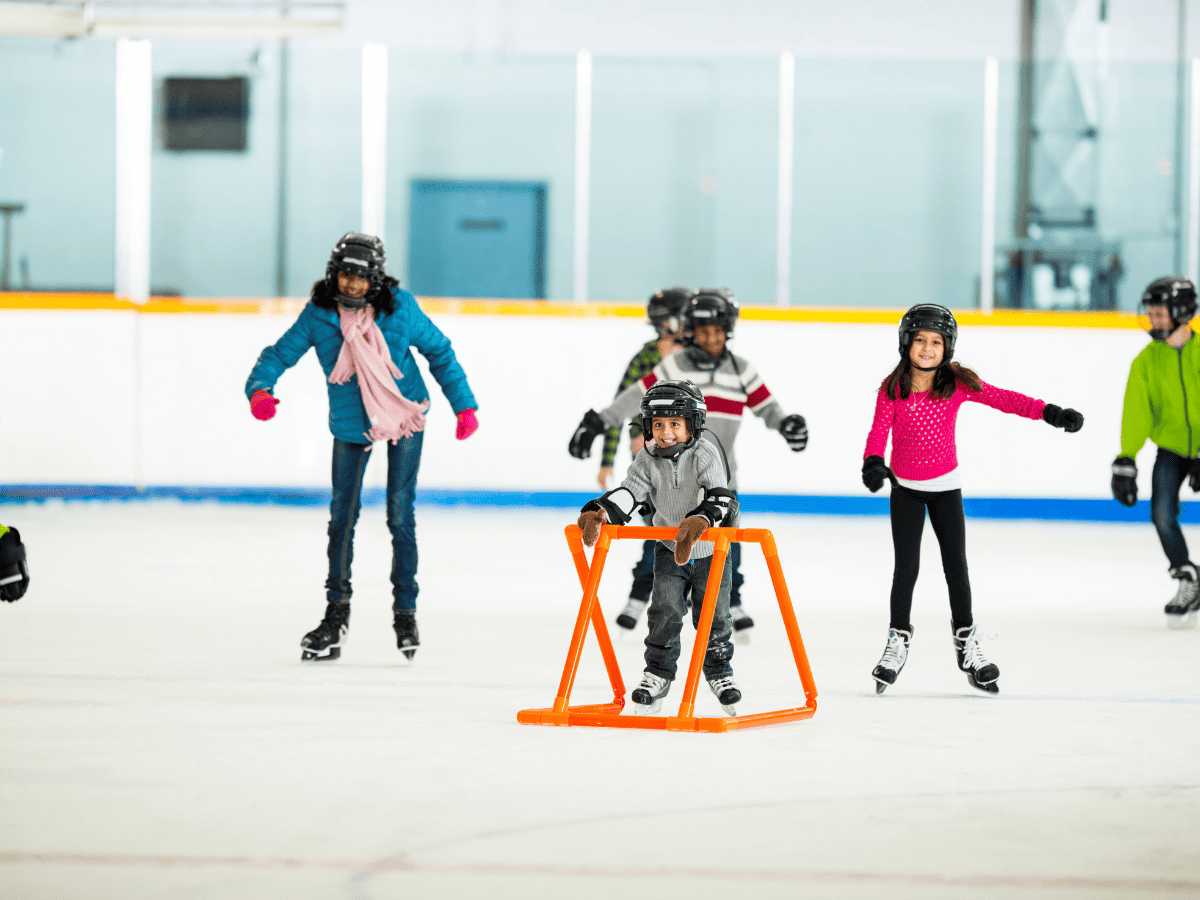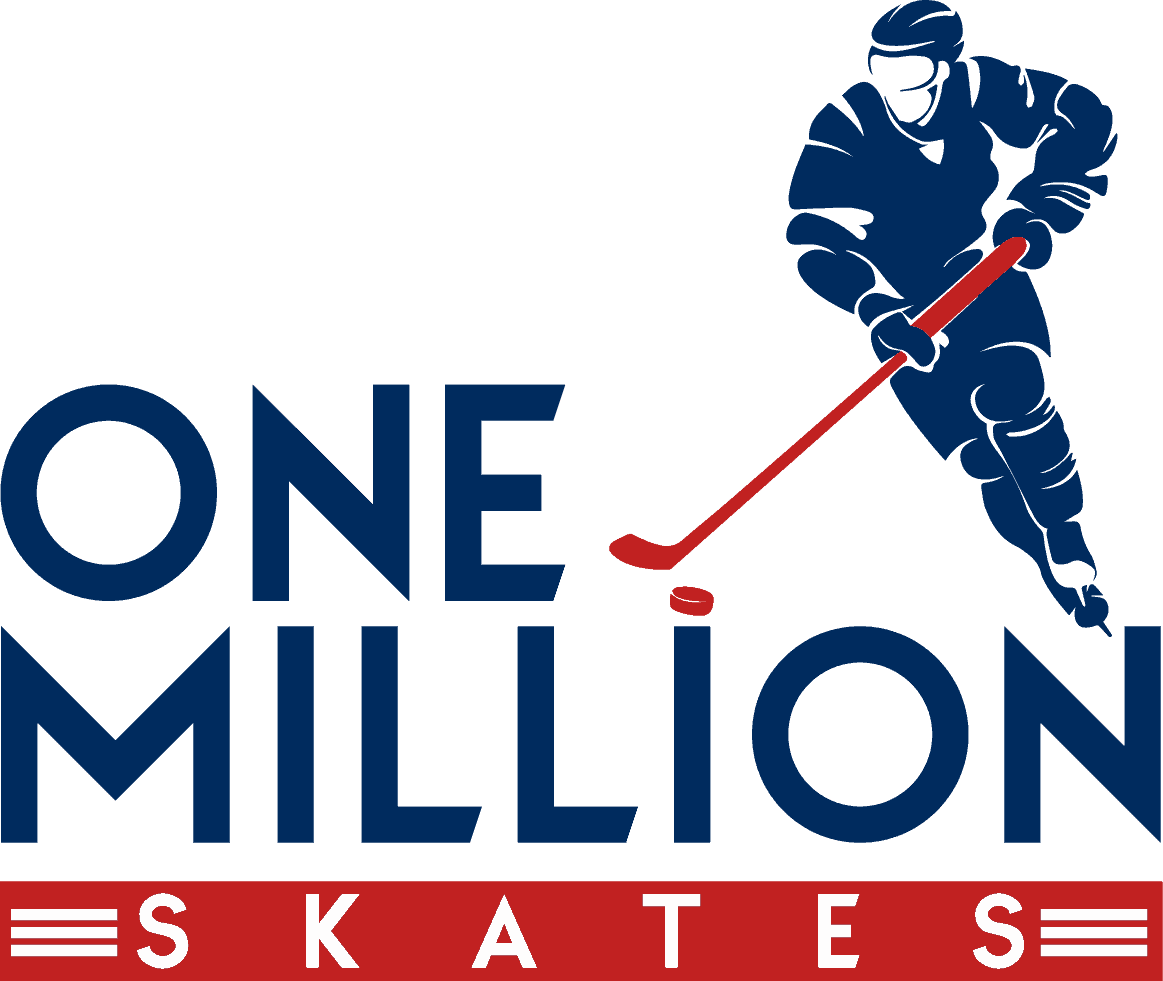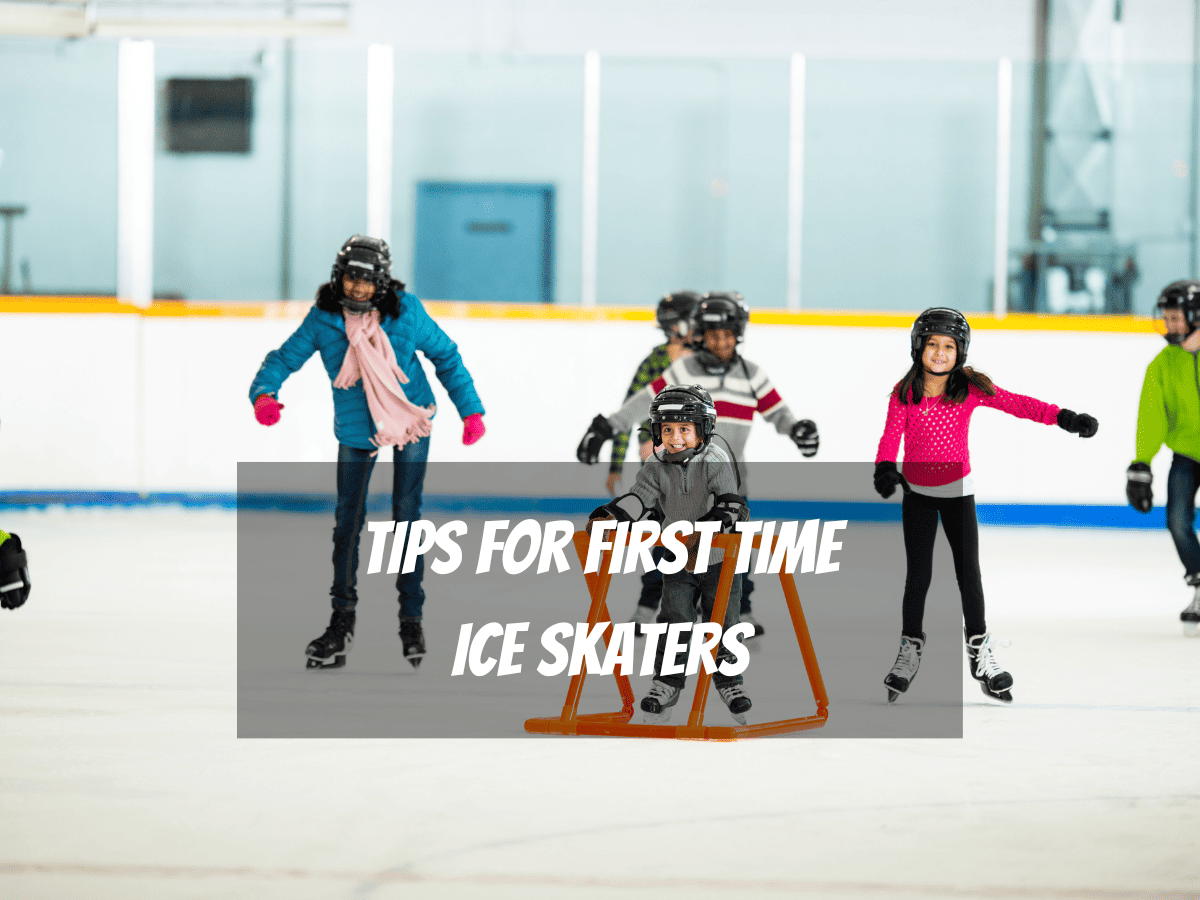Ice skating is a beautiful sport that requires skill, dedication, and balance.
Although it seems like only the most elegant of people can grace the ice with a Biellmann spin, in reality, these beautiful moves were perfected after years of practice.
Anyone can practice ice skating, but with the right tips and tricks, you can push past the beginners' lessons faster than your friends.
Take a look at our 10 essential tips to help you understand the basics and prepare for the more complicated and dramatic tricks.
Dress Comfortably And Safely
If you watch professionals ice skate for long enough, you will notice that they all wear light clothing which creates breathability while not causing tripping issues.
The outfits are beautiful and always show off a sense of dazzling glamour.
When you first start out, you shouldn’t be wearing these types of clothing.
These professionals have been on the ice for years, and so their body is prepared for the cold. Yours won’t be.
Instead, you should be wearing layers.
Wearing lots of thin layers of clothing will help you stay warm on the ice while allowing you to remove layers as you get hotter.
Because you’re new to the sport, you will likely fall over. To protect your hands from the cold, you should wear gloves.
Ideally, you should pick gloves with padding around the palm to help you brace for impact.
Along the same vein of thought, you should wear long but not thick socks. As ice skating is a sport, you are going to get hot as you work out.
Wearing thick socks will cause your feet to hold in their sweat, making it easier for you to fall.
But wearing long socks can help you contain a light layer of warmth as it spreads over your calves.
You may assume that wearing hats and a scarf is another layer to keep you warm, but in reality, these loose clothing can fall off your body and become a hazard for you and the other skaters around you.
Because of this, you shouldn’t wear anything loose on the ice. Lastly, we don't recommend wearing jeans as a beginner.
This is because the tight clothing will limit your movement.
And when you fall on the ice (which you will), the material will soak up the water, making the jeans heavy and uncomfortable.
Finding The Right Skates
Generally speaking, there are two types of skates; Hockey skates and figure skating skates.
If you’re reading this, then we can guess that you already have a sport in mind, but it can be useful to know the difference between these choices.
First off, figure skates have a blade called a “toe pick”. These are jagged-looking teeth at the top of the blade.
They are designed to help skates launch into the air when they jump.
Jumping isn’t a skill needed by hockey players, which is why they don’t have a toe pick.
Another big difference is that figure skating blades are longer and heavier than hockey blades.
This is to help create a smoother finish in their movement.
Hockey skates have shorter and lighter blades to help them move quicker along the ice.
It also reduces the likelihood of injury on the ice, due to the amount of fast and aggressive players that could otherwise fall onto the blade.
Keeping the blade short allows the skaters to have more control over their feet. When you first start off, it doesn’t matter which blade type you use.
However, as you begin to develop your skills, you will need to decide between grace and leaping ability, or speed.
Wrap Your Laces Around Your Ankle
You should make sure that your skates fit you properly, and once they do you need to learn how to fasten the laces.
Follow this process to ensure your feet are secure and comfortable in their new skates:
- Starting at the bottom of your laces, don’t pull too tight.
- Weave your laces through the eyelets, creating a firm but moveable tightness.
- Once you have completed the eyelets, wrap the remaining laces around your ankle on the outside of your shoe.
- Halfway around the remaining laces, create a knot for added security.
- Continue wrapping the remaining laces, and then tie the final knot.
Don’t Forget To Warm Up
Before you do any exercise you need to warm your body up. This means increasing your heart rate, and your blood flow.
This process is important to allow more oxygen to reach your muscles. If you don’t warm up your body you will likely develop sore muscles after the activity or cramp during it.
This can be especially true while you’re on the ice, as your body will naturally try to defend itself against the cold climate.
This means your blood flow will constrict as it tries to keep your organs warm.
Snapping from cold to hot, forces your blood vessels into fast action which can easily cause cramping.
To warm up, all you need to do is jog on the spot for 30 seconds, swing your arms for 30 seconds and practice lunges for 30 seconds.
Your First Skill - Balance
The most important skill to learn when you’re on the ice is how to balance.
Balancing isn’t about your legs or your movement, but about your body and your core.
Your body will have a natural balancing point, and your core (or your abs) should be able to help you find that point and stay there.
To some people, this will happen naturally. To others, you may need more direct instructions.
If that sounds like you, follow this process to find your balance:
- Keep your skates hip-width apart. This should give you enough room to stay stable. Any closer and you’ll have no control, but any further and you may fall.
- Be aware of your toes. The direction they are pointing in the direction you are going. If they are pointed out, your legs will go off in different directions. Aim to keep them pointing straight.
- Use your body weight to give directions. If you want to keep going forward, ensure your body weight is centered. If you want to turn left, move your body weight to the right. Don’t rely on your feet to get you in the right direction. Their job is to give you momentum, not direction.
Don’t Look Down

As you are balancing, the worst thing you can do is look down.
When you look down, your center of gravity will change, meaning your core cannot keep you upright in the same way.
Your center of gravity will become your thighs, which may not be as strong or stable.
With a new center of gravity, you are probably going to fall over.
The second reason to avoid looking down is because your mind will overcomplicate how you are moving.
You’ll notice how thin the blade is, or will become too aware of your foot’s movement, which will stop you from completing a graceful glide.
In short, looking down will make you lose control.
Keep Your Knees Bent
Let's try an off-the-ice exercise. Standing straight, ask someone to push you. Now do this again, but with your knees bent.
You’ll notice how easy it is to keep yourself balanced with a bent knee.
You will be quicker to find a new footing, your center of gravity is at the strongest part of your core, and if you fall over, your body is already braced for impact.
When your knees are bent, your center of gravity will be low on your torso, which will give you more control over your movement.
It will become easier for you to balance. This balance means you will find it easier to move your legs, and therefore create momentum.
Remember it is your legs that create speed, and your body that creates direction.
With your legs ready for action, through the bent knee, you can reach faster speeds.
Learn How To Stop
Before you start testing out these faster speeds, you should first learn how to stop.
Stopping safely and knowing how to fall will prevent you from hurting yourself. To stop you should:
- Keep your knees bent, and your feet in line with your shoulders.
- Gently turn your toes inward, while keeping your heel in place.
- Keep your balance until the momentum stops.
This is a simple stopping motion, which slows down your speed until a gentle stop.
If you need to stop quickly, this is a different skill and needs an instructor to tell you to complete it without injuring yourself.
However, you can attempt the motion by following these steps:
- As you are moving, put your legs together.
- Turn one leg 45 degrees, and place your foot against the straight foot.
- Keep your knees bent and prepare for a dramatic stop.
Ideally, you should aim towards a barrier when you stop, this way you can steady yourself once the momentum has gone.
However, you may end up stopping earlier than expected.
In these situations, you should gently point the toes outward again, to create a moment, and then inward to slow down.
Keep doing this until you reach the barrier.
Knowing How To Fall And Stand Up
Knowing the safe way to fall over will help you prevent injuries and continue skating.
Ideally, you should practice this technique before going on the ice.
Remember that the ice is hard ground, and hitting it the wrong way can cause damage from bad bruises, to broken hands.
To prevent as much injury as possible follow this guide to falling:
- Keep your knees bent.
- Lower yourself down, to create a lower center of gravity.
- Put your arms out to help balance.
- Purposefully roll onto your back.
When you feel the wobble of a fall, it can be easy to flail your arms around and fall smack on your back.
However, this falling technique helps you regain balance, and turn a smack into a roll, stopping blunt impact.
To stand back up again, you need to roll onto your front, get on your knees, and lift one leg up.
At this point, you should balance yourself by putting your hands (fingers curled into your fists) on either side of your leg, then push up and lift the second leg.
Keep your knees bent until you regain your balance, and then start skating.
Have Fun And Laugh When You Fall
Saving the easy tips for last, remember that ice skating should be fun. It doesn’t matter how many times you fall on your butt, or many quickly you can skate around the rink.
Try not to compare yourself to other ice skaters, and instead enjoy the weightless feeling of a successful glide, even if you only do it once.
Remember that you will fall over. This is going to happen. Embrace this eventuality.
When you fall, laugh and smile at the ridiculous noises or faces you pull in the aftermath and then get back up again.
No matter your age, you should expect to struggle when you pick up a new skill. Let that sink in.
You will struggle and that’s okay. Have fun, and keep trying.
Family Skating Tips
If you are skating as a family for the first time, there are a couple of special tips you should be aware of.
Firstly, you shouldn’t hold your child’s hand.
Although you may feel as though you are helping them, you are instead moving their center of balance to you.
This means they have no control and will likely fall over.
Instead, skate near them or suggest they use a balancing penguin until they get comfortable.
And secondly, remember that it’s okay if your child falls over. We know you will be scared for their safety, but they will be okay.
Of course, check for an injury, but after that, you should laugh and smile without belittling your child.
Teach them out to laugh at themselves, and make falling seem like a normal part of skating.
Summary
Now you know the basics, you can get on the ice and create some memories.

